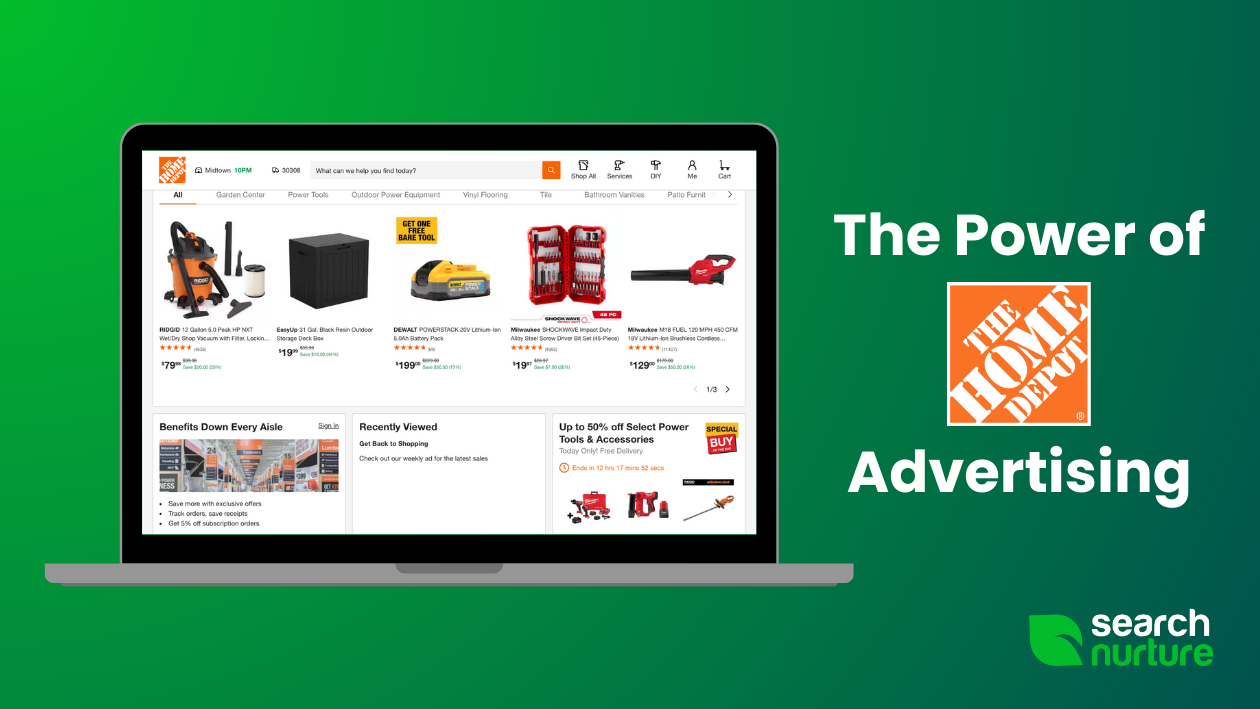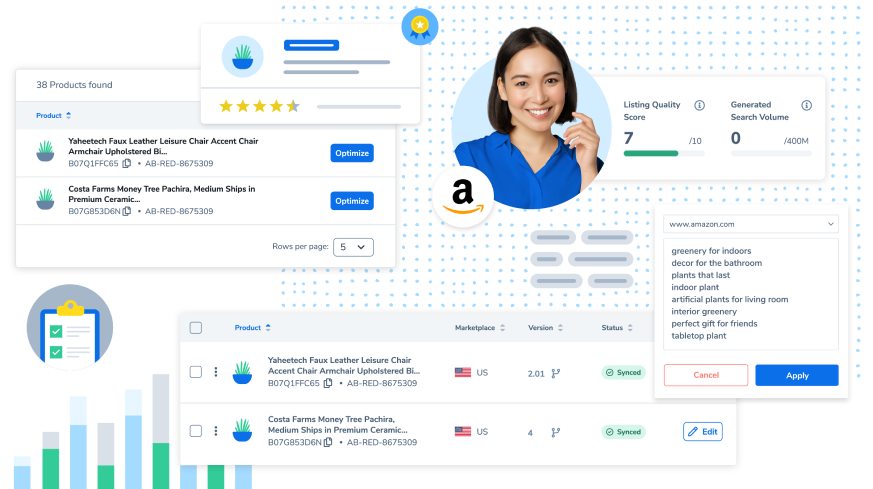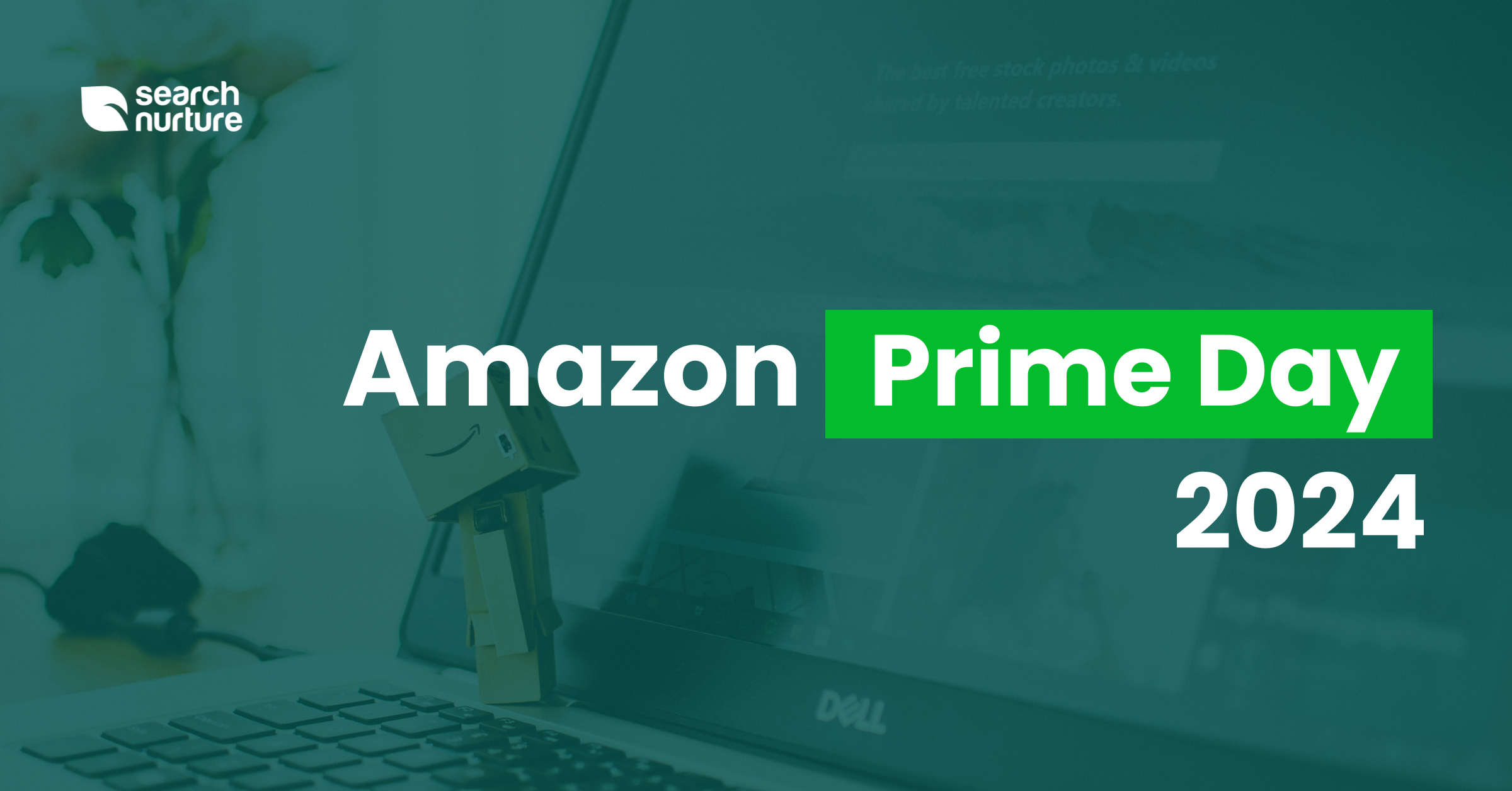Key Takeaways:
- Amazon backend keywords are hidden that sellers should use to boost their products’ visibility on the platform.
- Amazon backend keywords are ranked based on search relevance and importance, among other things.
- Sellers need to conduct thorough research and choose the right backend keywords for their products.
- Using third-party tools simplifies the process of adding backend keywords to your Amazon listings to maximize conversions.
Ecommerce business owners know the value of keywords in increasing visibility and generating sales. But shoving keywords into your listings (known as “keyword stuffing”) is seen as untrustworthy to shoppers. And the same principles that apply to Google’s search engine carry over to the Amazon A10 algorithm – the math that separates the sellers who make conversions from the ones who don’t. This is where Amazon backend keywords come in.
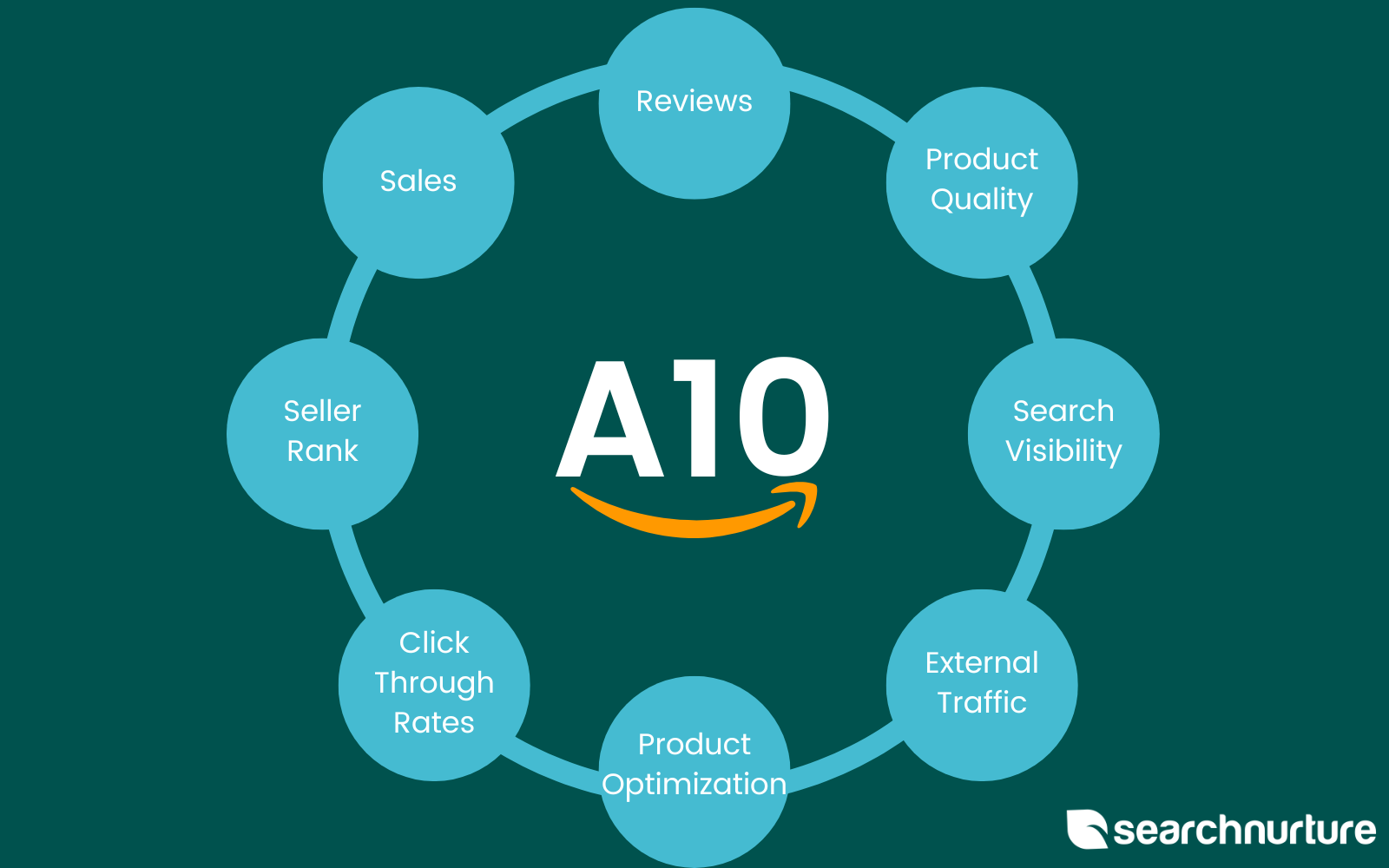
Increasing visibility on Amazon is important, but not as important as relevance. Novice sellers make the mistake of stuffing their product descriptions and titles with the most competitive keywords, hoping to attract as many visitors as possible.
Amazon backend keywords are the alternative to keyword stuffing that actually works. They allow sellers to include all their targets without cluttering their listing, optimizing their Advertising Cost of Sale (ACoS on Amazon) while maintaining a professional voice in the listing. In this guide, I’ll explain what Amazon backend keywords are, why they’re important and how to use Amazon backend keywords to increase your relevance on the platform.
What Are Amazon Backend Keywords?
Amazon backend keywords are hidden keywords that help your products reach your ideal customers without having to clutter up your listings with stuffed keywords. What do we mean by hidden?
Well, regular keywords live in your product descriptions and titles, and these help the Amazon A10 algorithm when it ranks search results. Customers can see them, which tells them that the products meet their needs.
Example: if you sell men’s hiking boots, you’d have the keyword “men’s hiking boots” in your title and description so that customers looking to buy men’s hiking boots can find you easily.
On the other hand, backend keywords, also called “Amazon seller keywords,” are acknowledged by the algorithm but not seen by customers. Adding backend keywords to an Amazon ad improves visibility and conversions by enabling the algorithm to index them into its search results behind the scenes.
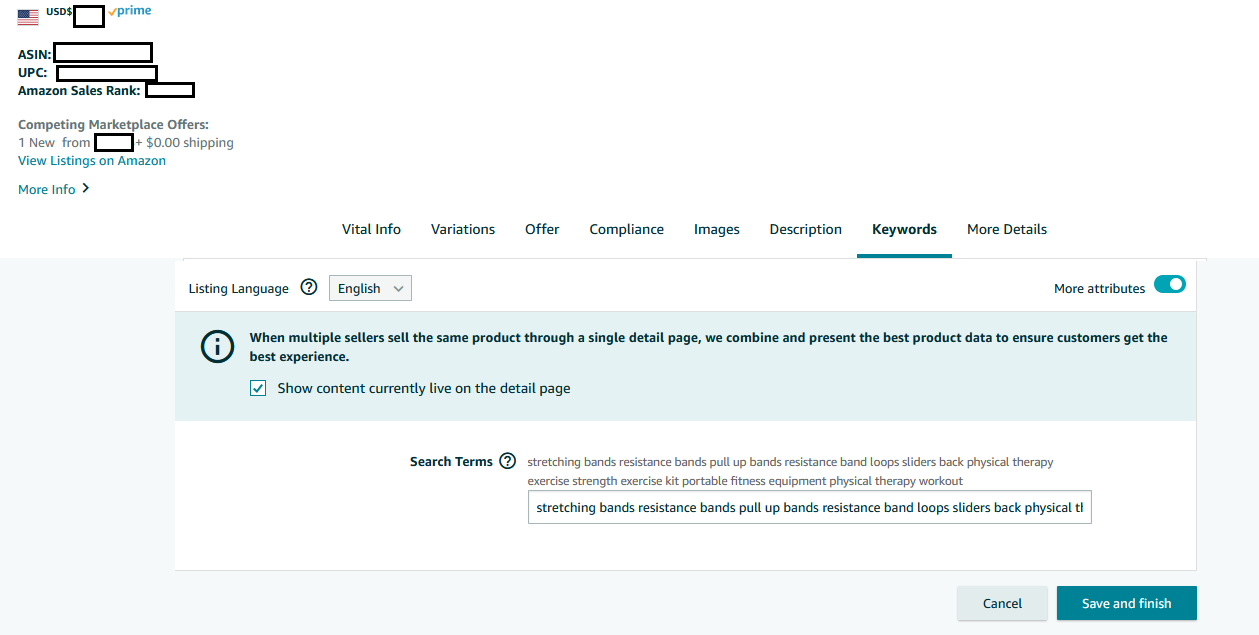
Relevant keywords, determined by a balance between how often they are searched and how fiercely other sellers compete for them, can be used as backend keywords to ensure that your visible content stays engaging. Since the Amazon A10 algorithm prioritizes well-made content written without keyword stuffing, backend keywords give both the marketing and copywriting sides of your Amazon operation some breathing room.

Why Are Amazon Backend Keywords Important?
Just as HTML tags increase visibility in a search engine context, adding backend keywords to Amazon listings similarly increases your impressions on Amazon. They tell A10 to index your product page as part of a keyword without having to include it in the structure of the page.
As mentioned, keywords that are stuffed into product titles reduce credibility (and readability), which cuts into your ad’s click-through rate. Even if your clothes are for “tall women” or “overweight people,” you may not want to word it exactly like that in your description. You can include these specifics as backend keywords to preserve your listing’s aesthetics.

There are other reasons that backend keywords are an important part of your SEO strategy on Amazon. For example, let’s say you are a seller in a niche industry with only a few competitors but fierce competition for prospects on the site. Any seller knows the importance of looking at his/her competitor’s page to learn the keywords they are targeting. By using backend keywords, you can keep your strategy confidential, which may allow you to rank on Amazon in keywords that your competitors didn’t consider.
Amazon Ranking and Indexing
Amazon ranking describes where your product appears in search results (both its position and page). The higher up your product is ranked in relevant keywords, the more visibility it will have. This drives sales on Amazon to an ominous degree – over 70% of purchases on Amazon happen from the first page of search results.

The A10 algorithm looks at how your products perform on Amazon in its keyword category to rank its appearance in the results. Therefore, generating sales in a given keyword category is a time-sensitive goal on Amazon, where the longer your sales are slow, the lower Amazon will rank your products in that keyword.
“Indexing” refers to how Amazon identifies and sorts your listing into these categories. If your product is indexed in a keyword, this means it can appear in search results that include it.
How Do I Know if a Backend Keyword is Indexed?
Amazon will not index every backend keyword you include in every ad, including PPC ads, that you create. Amazon uses a machine learning process to determine keyword relevancy so that brand names and offensive words do not get indexed. But this leads to an important question asked by all sellers new to Amazon: how do I know if a backend keyword is indexed?
The easiest way to check is to use the product’s ASIN, which is both on your product page and in the listing’s URL. Type that 10-digit character into the Amazon search bar, followed by the keyword you want to check. If your product appears in the search results, then Amazon has indexed it for that keyword.

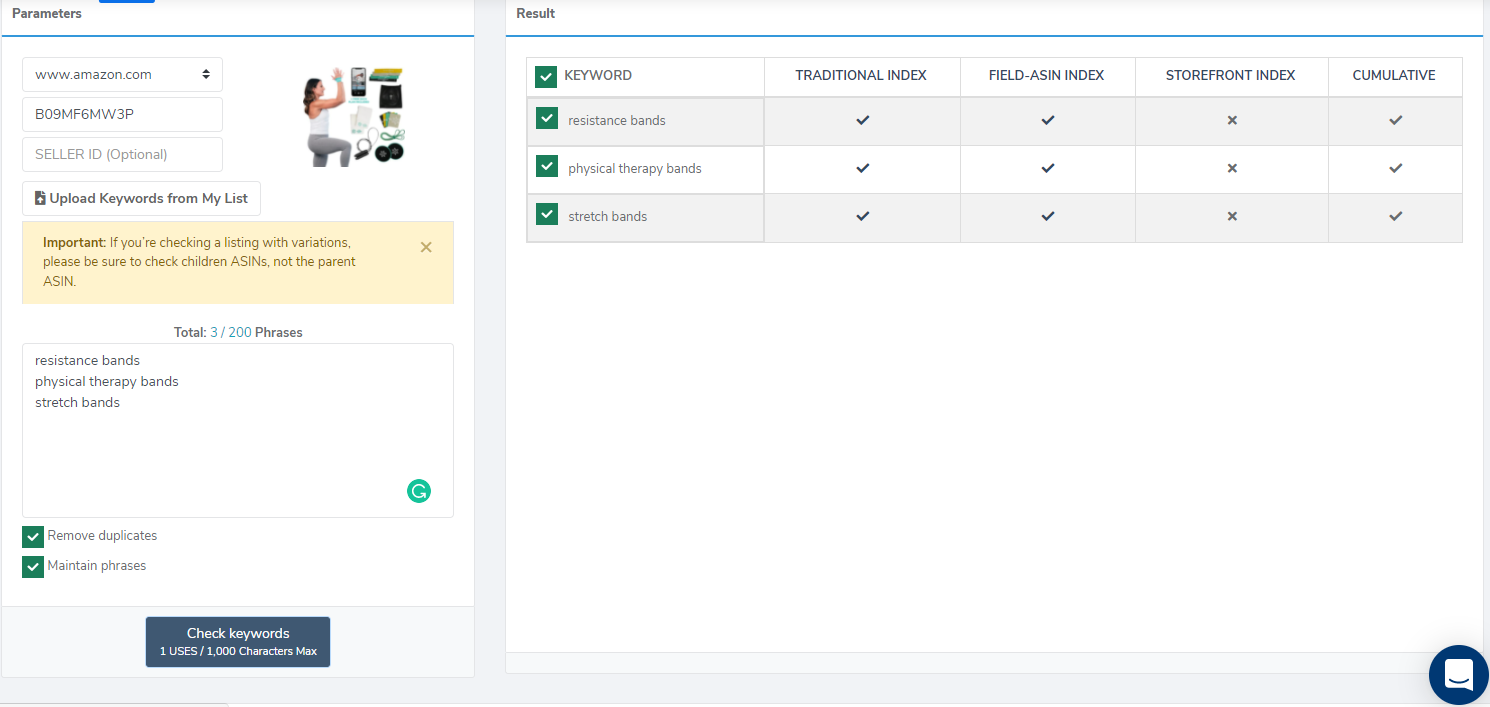
However, this method can be tedious if you intend to check the indexing on many keywords at once. Online tools that check keyword rankings and indexes such as Helium 10’s Index Checker or Sellics’ free Sonar tool, offer alternative methods to easily verify if your target backend keyword has been indexed for a particular listing.
How to Add Backend Search Terms on Amazon
It’s easy to add backend keywords on Amazon; here’s a quick guide to get you started:
1. Log in to your Amazon seller central account

2. Navigate to the “Inventory” drop-down menu, select “Manage Inventory
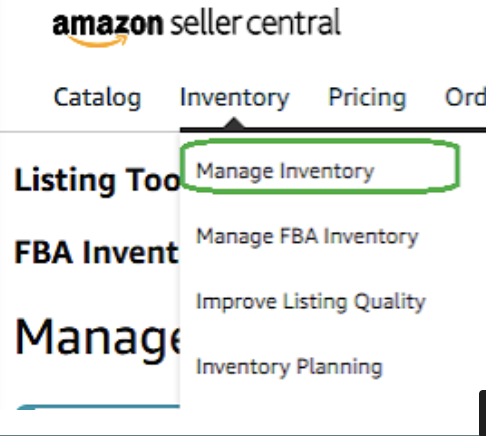
3. Find the appropriate listing where you want to add backend keywords. Click the “Edit” button. You will be redirected

4. Select the “Keywords” tab

5 Enter your backend keyword in the “Search Terms” field and select “Save and finish”

How to Find the Right Amazon Backend Keywords for Your Listing
As easy as adding backend keywords is, finding the right words and optimizing them for your product’s performance requires the use of tools. Here are three examples of keyword tools that sellers can use to find keywords for their Amazon listings:
1. Search Term Report
Search Term Report is a tool offered by Amazon to find and improve the quality of keywords. We recommend using any third-party keyword locators as complements to Amazon’s tool, not as a replacement.
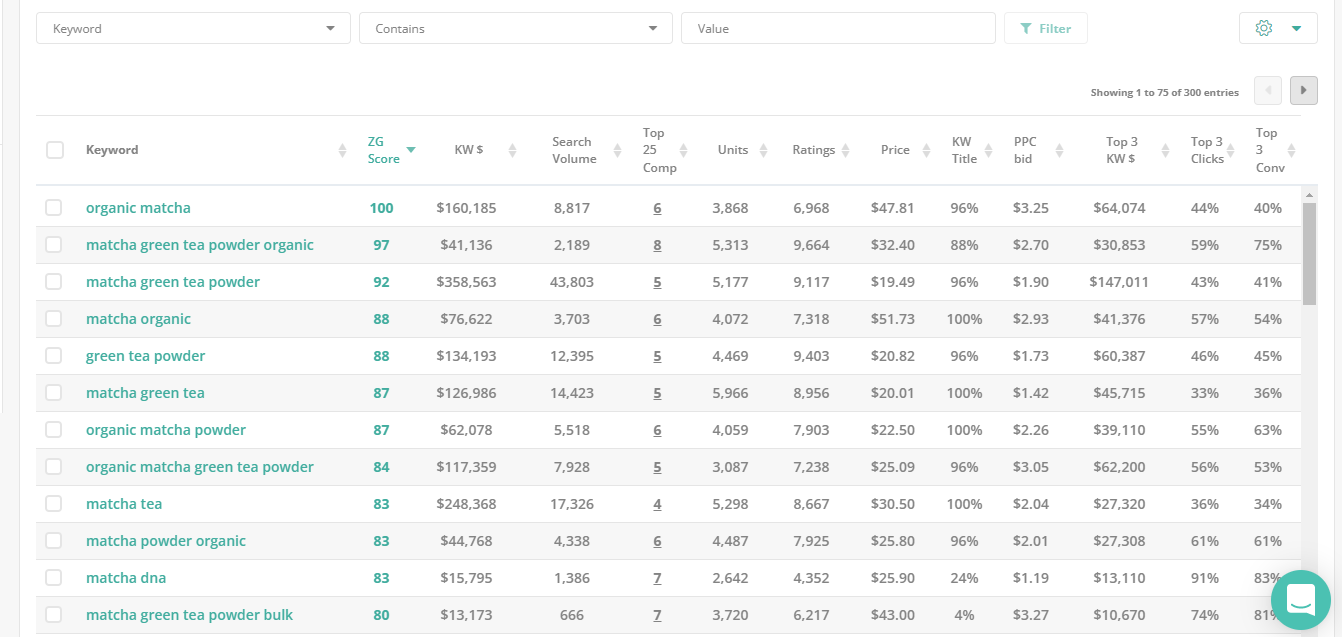
The Search Term Report allows you to organize your product catalog to target the right products with the right keywords in each of your ads, including PPC ads. However, it takes some experimentation. The report used to display which search terms applied to which exact product ASINs, but as competition on Amazon has grown, this feature has been removed.
Therefore, sellers now strategically create different ad groups for each SKU to connect the keywords to the purchases and refine their campaigns.
2. Amazon Keyword Tools
Third-party keyword tools offer Amazon backend keyword help in both free and paid subscriptions by identifying keywords that you should be targeting. Since many free tools can offer basic keyword locator services, novice sellers should get a feel for the process before committing to a paid subscription.
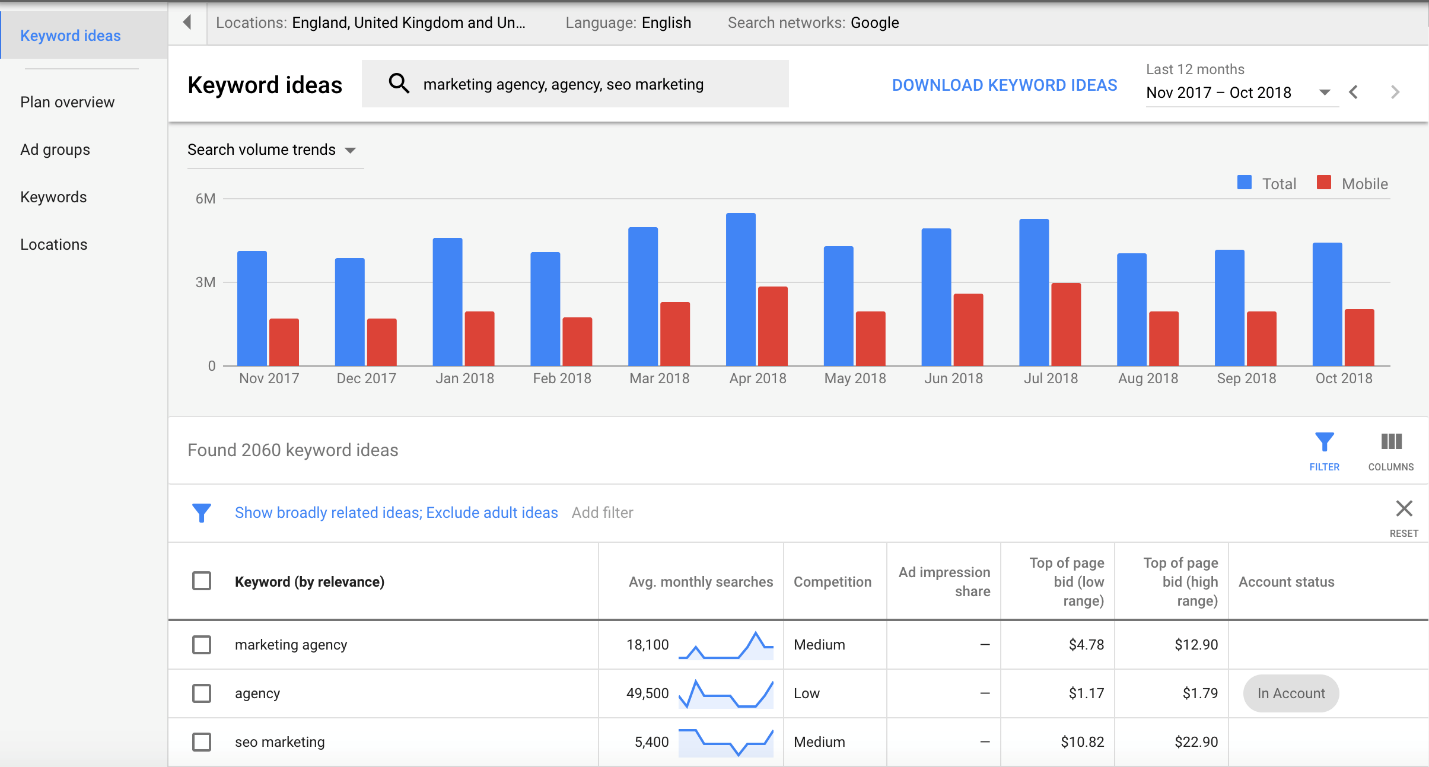

Some of the best Amazon keyword tools available include:
- Google Keyword Planner (free)
- Wordstream Keyword Tool (free)
- Ubersuggest (free)
- Sellzone (paid and free)
- Helium 10 (paid and free)
- Zonguru (paid)
- Jungle Scout (paid)
- SEMrush (paid)
- AMZtracker (paid)
3. Reverse ASIN Lookup
Reverse ASIN lookup provides a vital resource for sellers to find new keywords using their competitors’ ASINs. These can be found on their product pages in the same location as yours, in the product information as well as the URL.
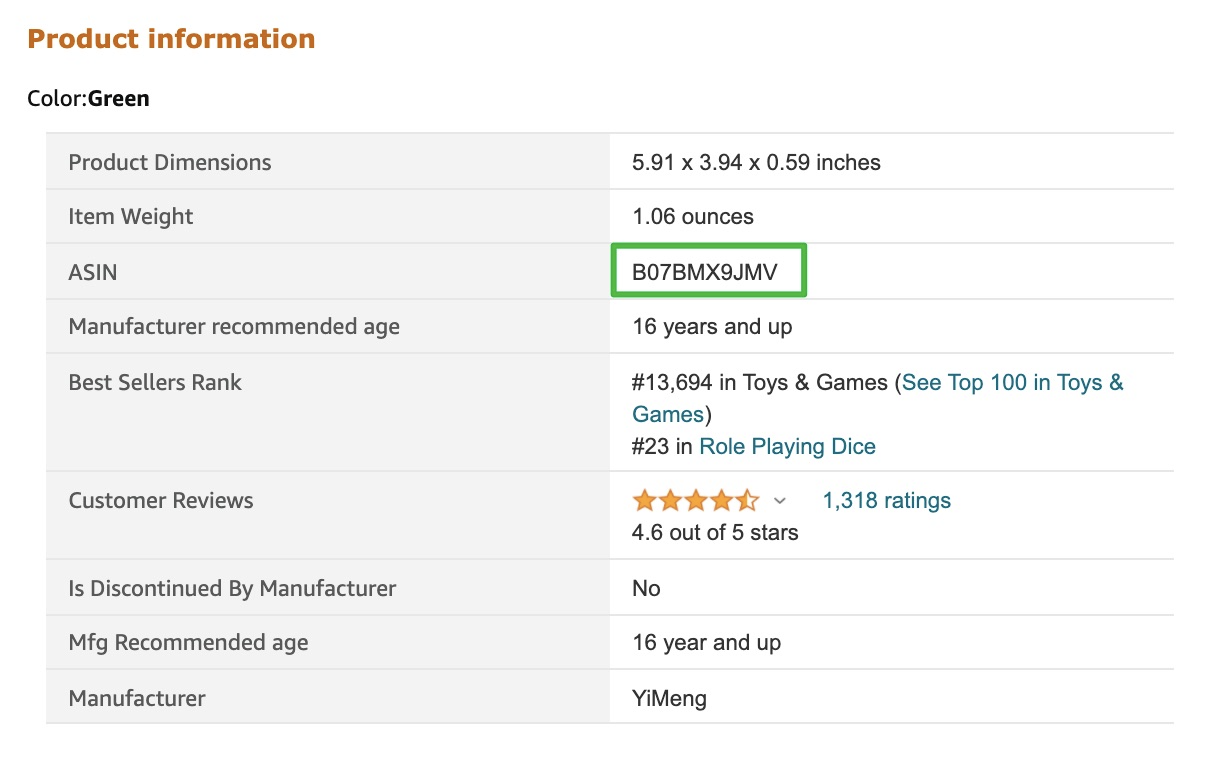
Tools like jungle Scout can then be used to find the keywords, sorted by search volume, that this ASIN could be targeting. Since your competitor’s thought process will be similar to yours, you can use these results to guess the keyword strategy of your biggest competition, which can both help you figure out which words to compete for as well as which to avoid wasting your marketing budget on.
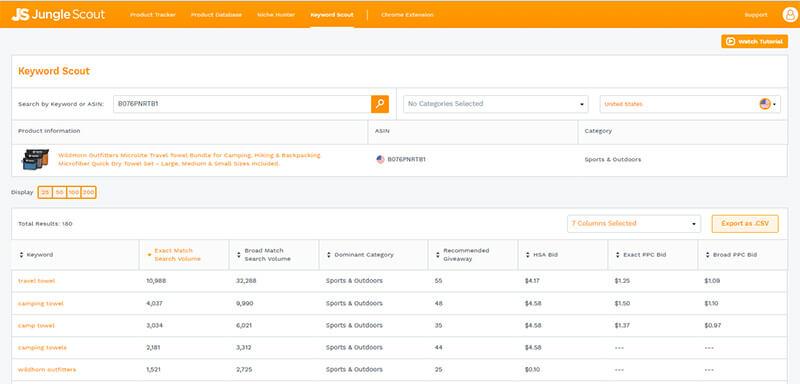
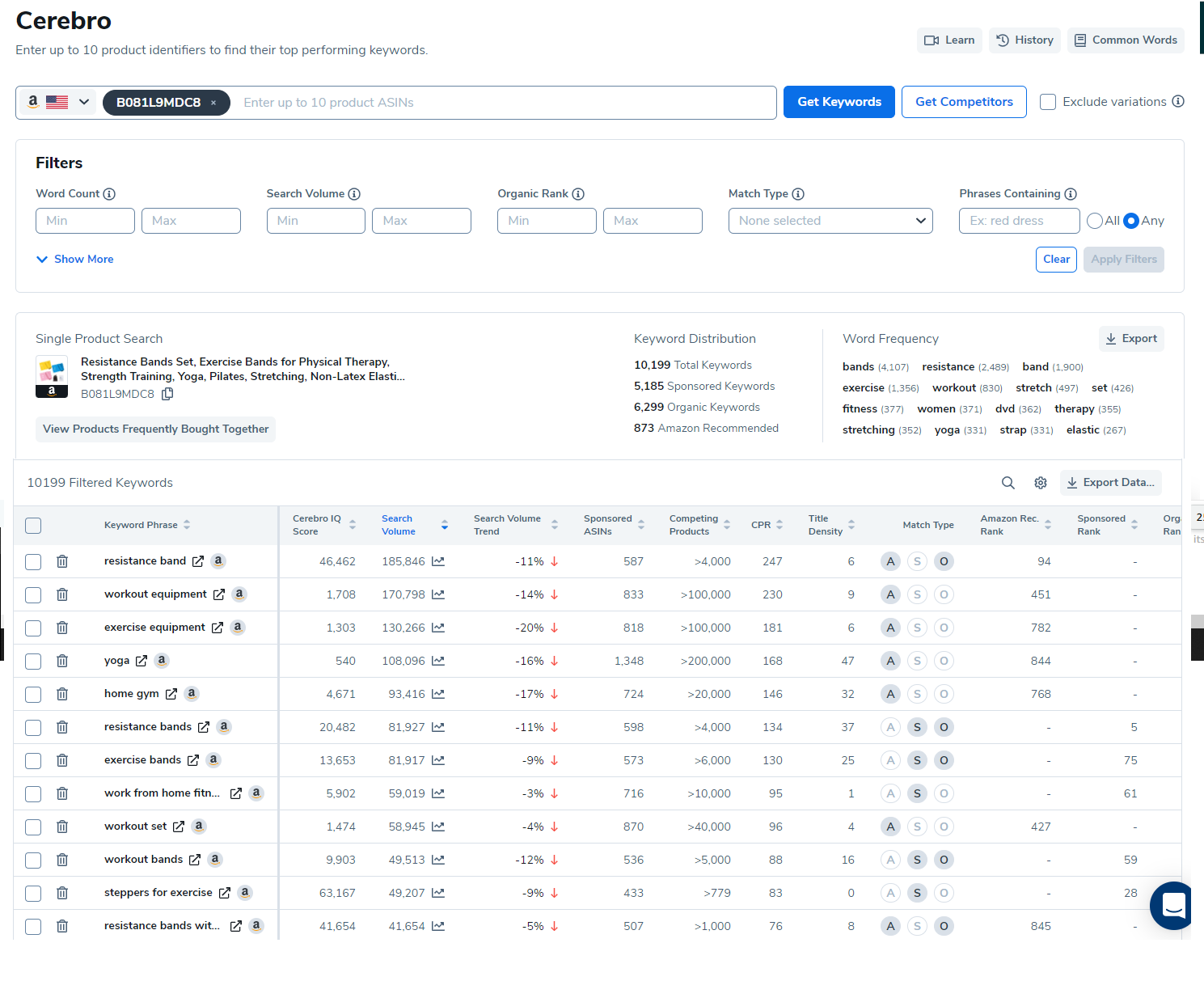
How to Optimize Amazon Backend Keywords: Do’s and Don’ts
Knowing how to source keywords, as well as the importance of choosing the right words for your products, all sellers need a checklist of the do’s and don’ts for optimizing backend keywords on Amazon. Consider these tips when optimizing your keyword strategy:
Do:
Do: Utilize LSI Keywords
LSI or latent semantic indexing keywords refer to search terms that have different meanings and must be indexed using context from other listings. Incorporate LSI keywords into your backend keywords to differentiate between two semantically similar concepts.

One Amazon search terms example that utilizes LSIs could be a seller that sells frozen desserts. They might use LSI keywords to ensure that their listing is indexed with “food” and “ice cream” and does not show up in results with the Disney film, Frozen.
Do: Utilize Abbreviations and Alternate Names
Alternate names and abbreviations can be included as backend keywords to cover more search possibilities. Take your buyer’s intent into account when creating these. Ask yourself, if you wanted to search for your product, what might you type in?
Do: Utilize a Single Space When Separating Keywords
This is self-explanatory. Separate your keywords by a single space to keep everything clean so that Amazon knows exactly how to index your inputs.
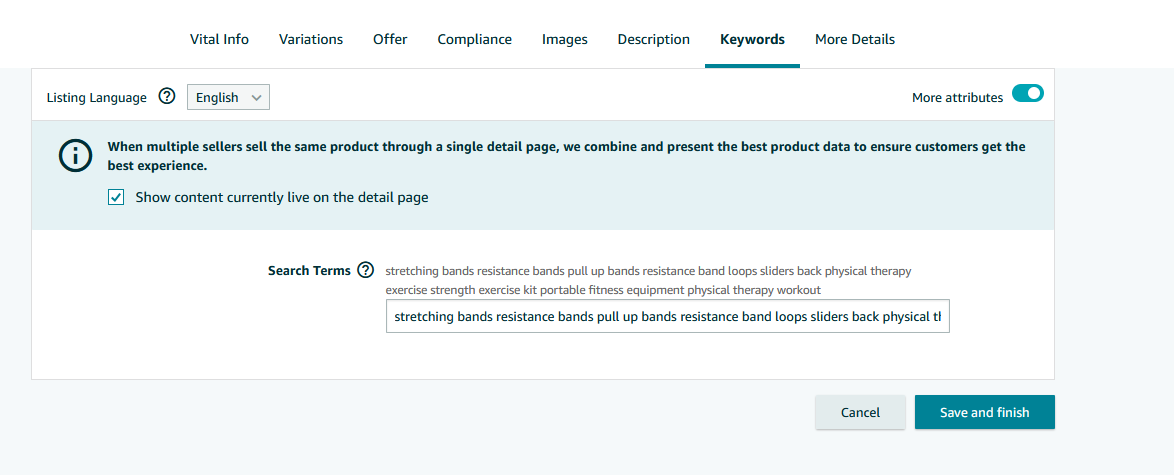
Do: Appeal to Logical Order of Search
The goal of keyword inputs is discoverability. Placing them in a logical order improves Amazon’s ability to index them properly for your products. Customers are more likely to search “frozen ice cream” than “ice cream frozen.” If you put both, put them in a logical order.
Do: Use All Lower Case
Amazon rejects brand and product names so proper nouns will rarely factor into your backend keywords. Use lower case if they do.
Do: Monitor Keyword Performance
Many keyword tools have features that allow you to monitor your ranking and performance in certain keywords. Your keyword strategy should change with new competition in certain words as well as your discoveries as you test the performance of each word.
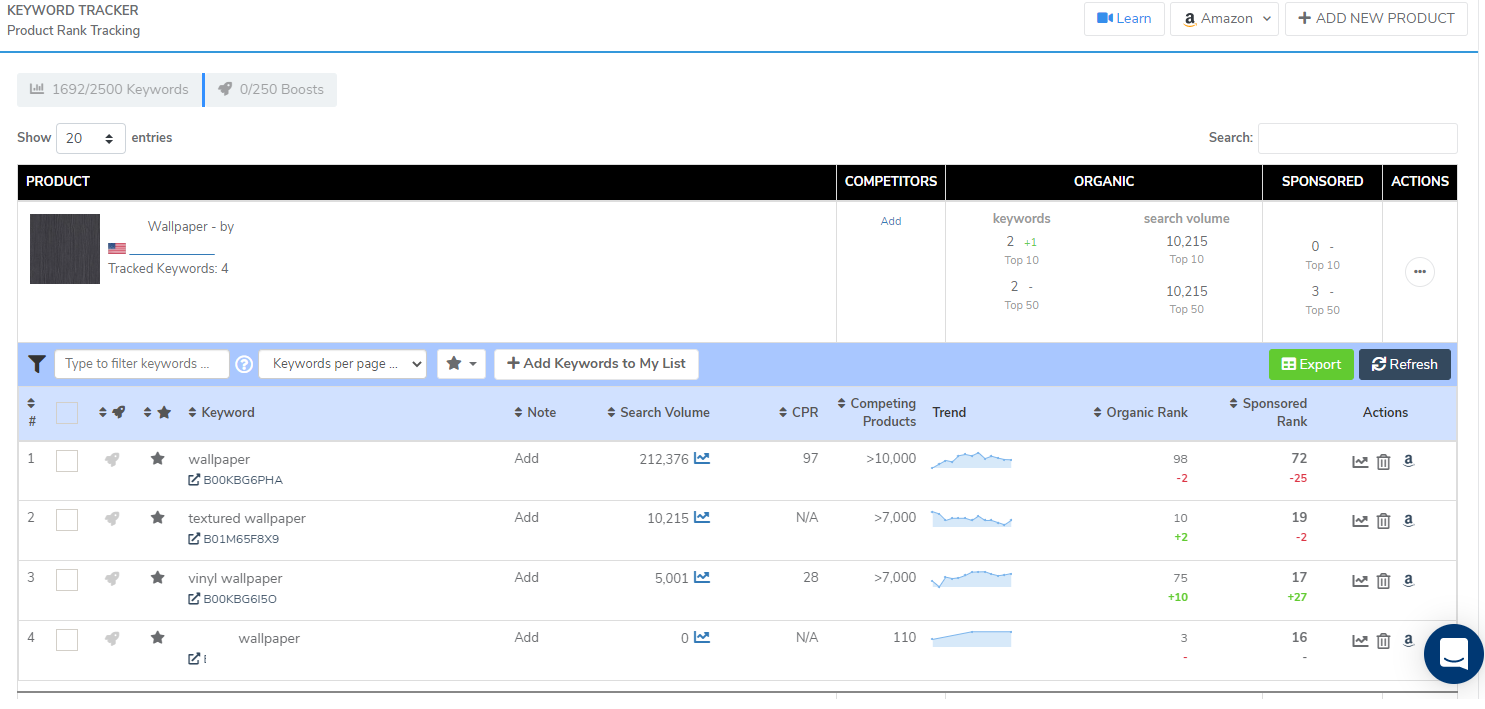
Don’t: Exceed Limit Length (250 bytes)
Knowing how important keywords are, you may be wondering: how many keywords does Amazon allow? The limit is 250 bytes, which refers to a file size that corresponds to an Amazon keyword limit of about 40 backend keywords. Non-special characters like letters and numbers each take up a byte of space. Remember that going over 250 bytes will negate all your keywords, not just the excess.
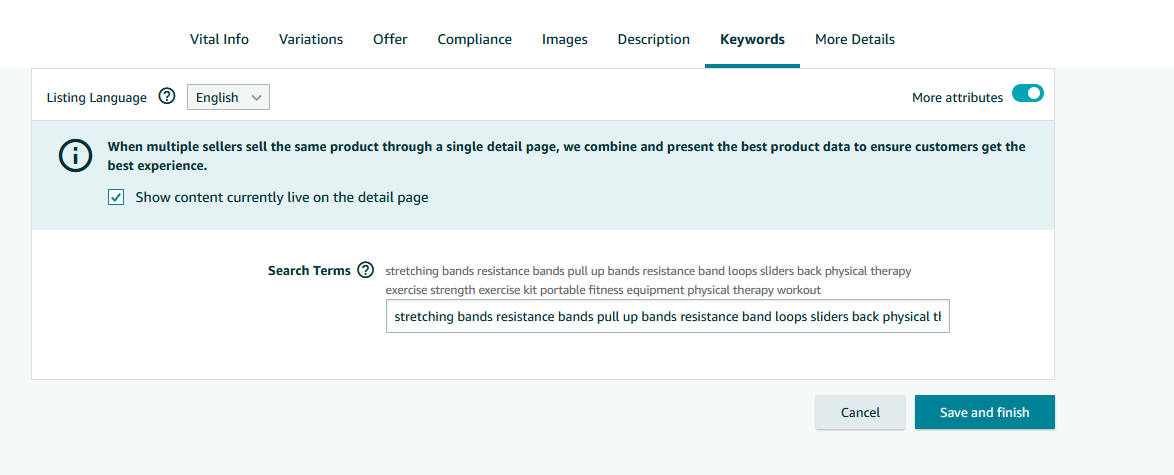
Don’t: Reuse Keywords That Are in Your Product Title, Bullet Points, or Description Already
Repeating terms you have already covered in the frontend listing will not make your product “more visible.” Limit each keyword to one use.
Don’t: Overuse Keywords
The most optimized listings choose relevant keywords that can be easily managed and tracked. Using more keywords than you need or repeating similar words in the plural form will not improve your rankings.
Don’t: Use Punctuation
Amazon expressly prohibits using punctuation in the backend keywords so the algorithm can easily read your entries. It is vital to follow this advice.

Don’t: Worry About Case-Sensitivity for Keywords
All your keywords will be listed in lower case without punctuation. Input the words with as few variations as possible.
Don’t: Use Temporary Statements
Keywords should not be used as promotions or changed to accommodate your new offers. Words like “on sale,” “limited time,” “price reduction,” or “new version” will not be permitted by Amazon’s algorithm. To make its results as accurate as possible, Amazon rejects subjective claims of quality as well as temporary changes in an item’s status.
Don’t: Use Stop Words
Stop words are common words that can throw off a language processing algorithm like A9, making your keywords difficult to index. Your keywords should not include stop words such as “on,” “is,” “the,” “that,” or “which.”
Don’t: Use Misleading or Irrelevant Keywords
Misleading keywords will not improve your sales, even if they potentially increase visibility. To use our earlier example, including “Disney” as a backend keyword in your listing for frozen desserts will not help you piggyback onto search results for the film. Even if it did, those customers would not be interested in your product.
Let Search Nurture Elevate Your Amazon Ads Strategy
Correctly utilizing backend keywords requires an understanding of keyword research as well as how the Amazon A10 algorithm sources and indexes the words. With the right guidance, backend keywords can make all the difference in a product listing’s performance.
I know keeping up with all of these tricks and trends of Amazon Ads and keyword strategy can be a lot, but these are extremely important skills sellers need to adapt to increase their sales and marketing ROI on the platform. That’s where working with an Amazon advertising agency like Search Nurture comes in.
Here’s what you can expect from working with me and my team of Amazon advertising experts:
The Amazon marketplace is constantly changing, so your team at Search Nurture will conduct ongoing monitoring and adjustments to make sure your ads are performing optimally.
We’ll create and design your advertising campaigns for various products. We will work with you to create targeted campaigns that reach your ideal audience and bring in high-quality traffic.
Our team will conduct thorough keyword research to identify the most relevant and effective keywords for your product listings. This includes both frontend keywords (visible on the listing) and backend keywords (hidden but still indexed by Amazon)
Optimization: Once we have identified the best keywords, we will optimize your product listings accordingly. This includes crafting compelling titles, bullet points, descriptions, and backend search terms.
Have questions about Amazon backend keywords or Amazon PPC in general? We’d love to chat! Reach out to us via our Contact Page or by clicking the Schedule a Call button below.

Article by








